Abstract
Forty one preterm infants (birth weight < 1500 g) were studied by daily Doppler echocardiography for the first week of life to examine the effect of a haemodynamically significant ductus arteriosus (HSDA) on systemic blood pressure. Hourly records of blood pressure were averaged for each infant to produce a 24 hour mean value and the infants were then allocated to groups according to whether, by echocardiographic criteria, there was a HSDA on that day. In infants from 1000 to 1500 g the differences in all parameters of blood pressure between those with and without a HSDA were not significant. In infants < 1000 g the mean blood pressure was significantly less in the infants with a HSDA throughout the first week of life. Systolic blood pressure was reduced by as much as diastolic blood pressure and as a result the pulse pressure did not differ. Infants < 1000 g with a HSDA were given more plasma and a greater number received inotropic support. Gestational age, respiratory disease severity, and complication rates did not differ between those with and without a HSDA. The possibility of a clinically silent HSDA should be considered before large amounts of plasma volume expanders are given to treat hypotension in infants < 1000 g.
Full text
PDF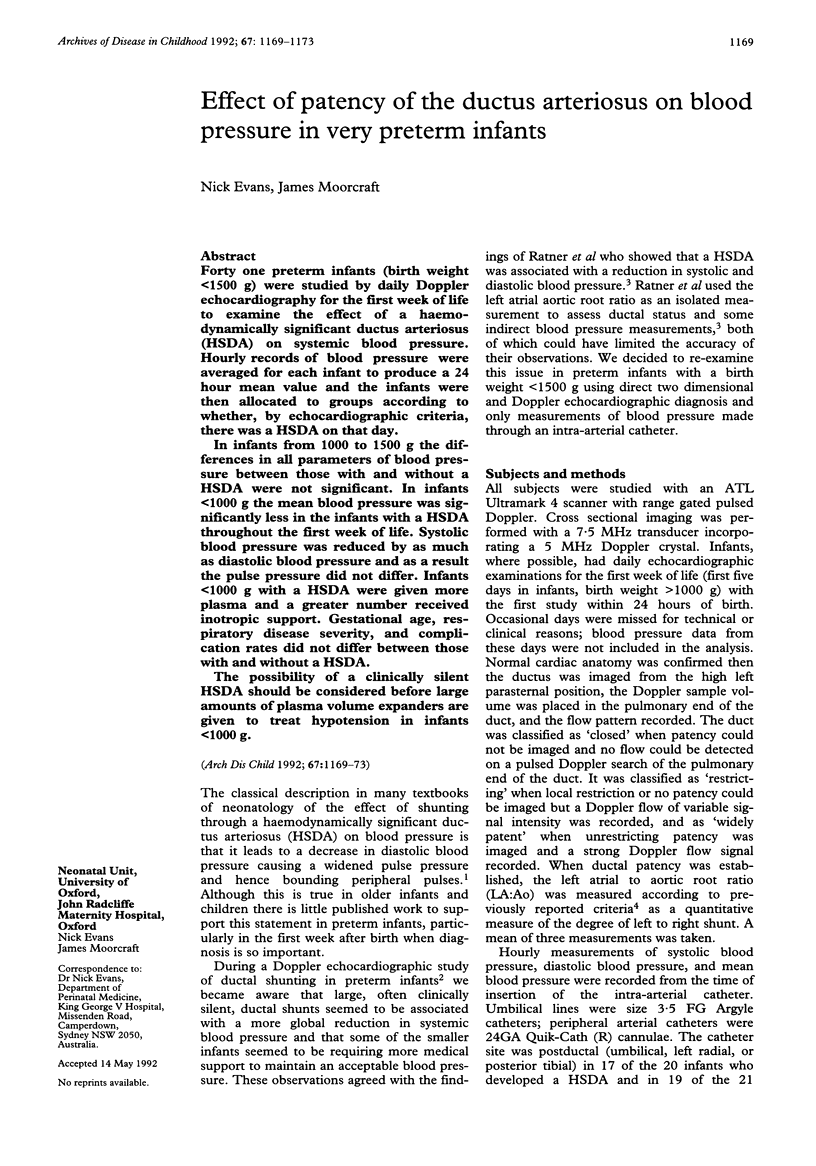
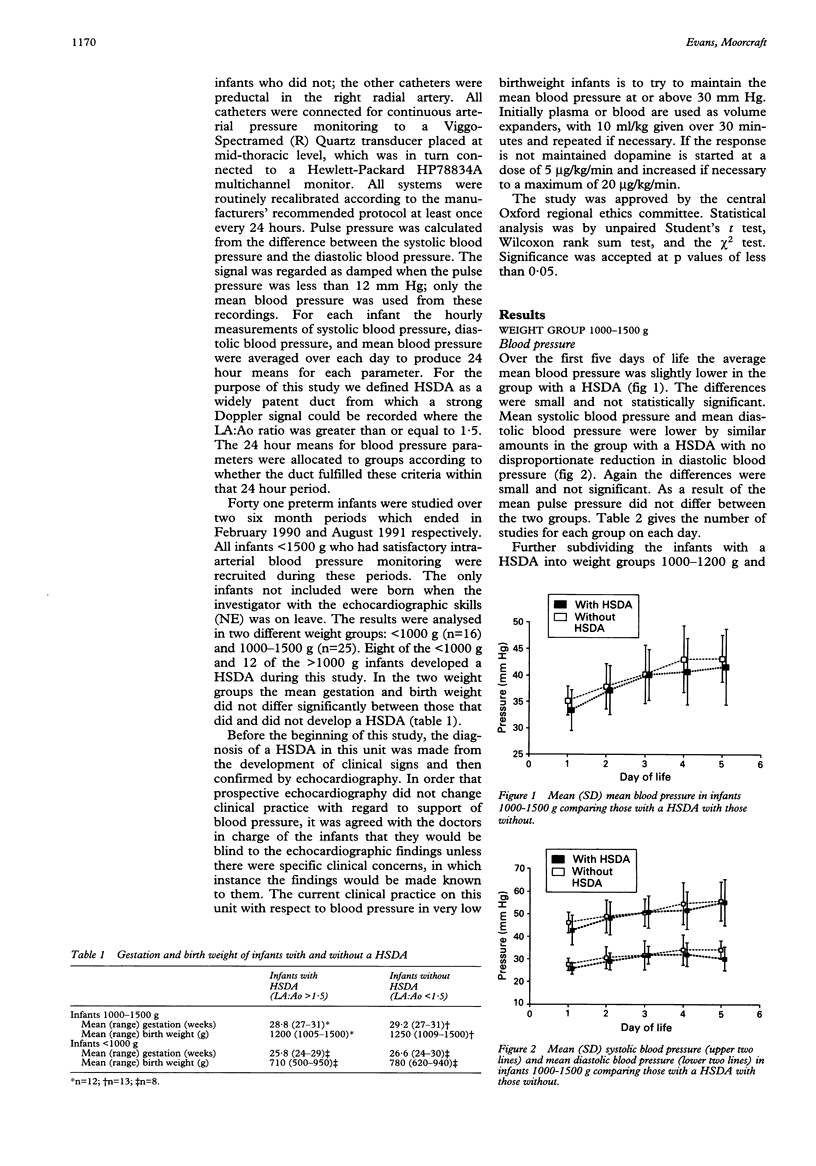
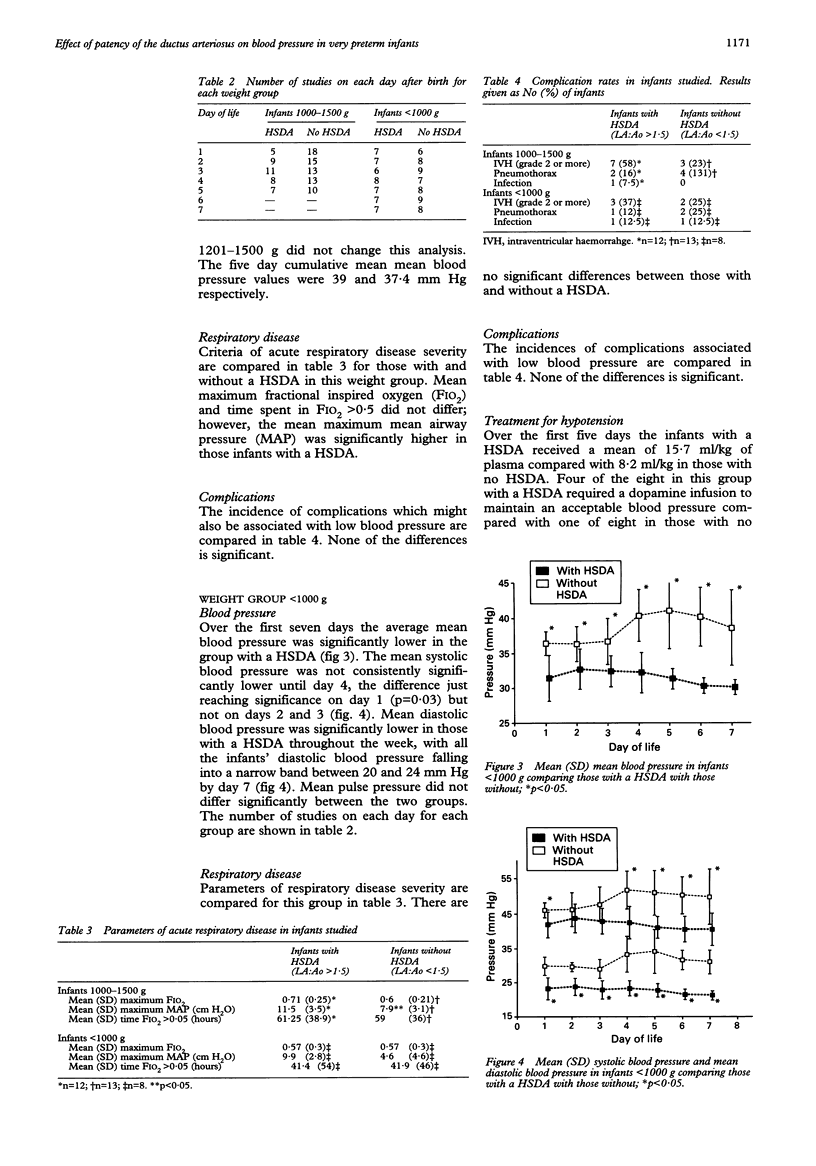
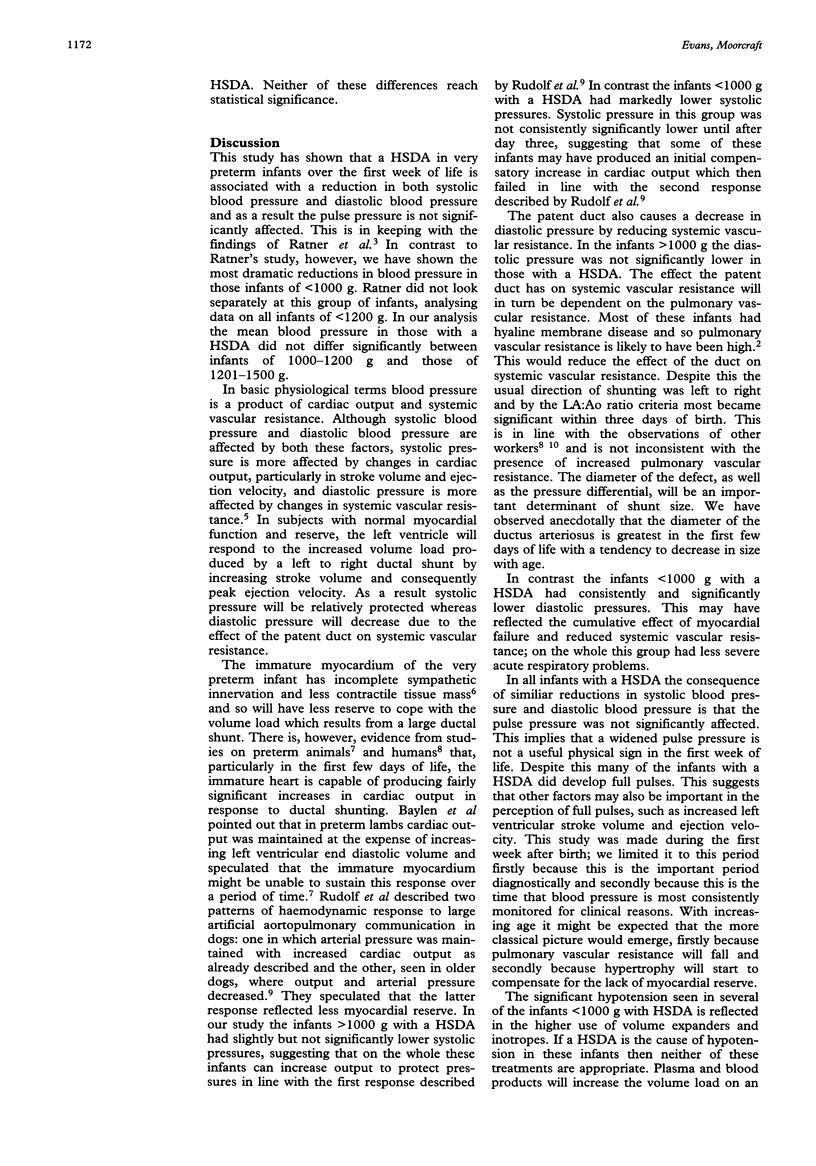
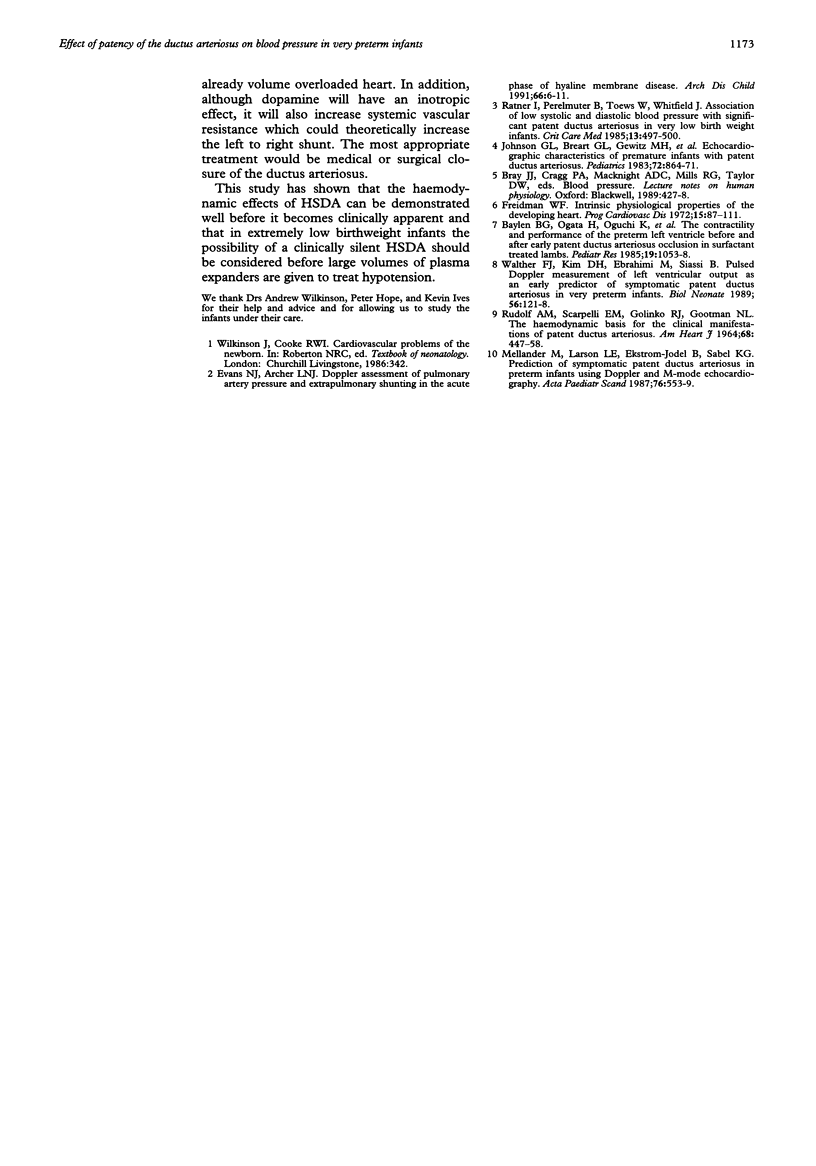
Selected References
These references are in PubMed. This may not be the complete list of references from this article.
- Baylen B. G., Ogata H., Oguchi K., Ikegami M., Jacobs H., Jobe A., Emmanouilides G. C. The contractility and performance of the preterm left ventricle before and after early patent ductus arteriosus occlusion in surfactant-treated lambs. Pediatr Res. 1985 Oct;19(10):1053–1058. doi: 10.1203/00006450-198510000-00022. [DOI] [PubMed] [Google Scholar]
- Evans N. J., Archer L. N. Doppler assessment of pulmonary artery pressure and extrapulmonary shunting in the acute phase of hyaline membrane disease. Arch Dis Child. 1991 Jan;66(1 Spec No):6–11. doi: 10.1136/adc.66.1_spec_no.6. [DOI] [PMC free article] [PubMed] [Google Scholar]
- Friedman W. F. The intrinsic physiologic properties of the developing heart. Prog Cardiovasc Dis. 1972 Jul-Aug;15(1):87–111. doi: 10.1016/0033-0620(72)90006-0. [DOI] [PubMed] [Google Scholar]
- Johnson G. L., Breart G. L., Gewitz M. H., Brenner J. I., Lang P., Dooley K. J., Ellison R. C. Echocardiographic characteristics of premature infants with patient ductus arteriosus. Pediatrics. 1983 Dec;72(6):864–871. [PubMed] [Google Scholar]
- Mellander M., Larsson L. E., Ekström-Jodal B., Sabel K. G. Prediction of symptomatic patent ductus arteriosus in preterm infants using Doppler and M-mode echocardiography. Acta Paediatr Scand. 1987 Jul;76(4):553–559. doi: 10.1111/j.1651-2227.1987.tb10520.x. [DOI] [PubMed] [Google Scholar]
- RUDOLPH A. M., SCARPELLI E. M., GOLINKO R. J., GOOTMAN N. L. HEMODYNAMIC BASIS FOR CLINICAL MANIFESTATIONS OF PATENT DUCTUS ARTERIOSUS. Am Heart J. 1964 Oct;68:447–458. doi: 10.1016/0002-8703(64)90145-0. [DOI] [PubMed] [Google Scholar]
- Ratner I., Perelmuter B., Toews W., Whitfield J. Association of low systolic and diastolic blood pressure with significant patent ductus arteriosus in the very low birth weight infant. Crit Care Med. 1985 Jun;13(6):497–500. doi: 10.1097/00003246-198506000-00012. [DOI] [PubMed] [Google Scholar]
- Walther F. J., Kim D. H., Ebrahimi M., Siassi B. Pulsed Doppler measurement of left ventricular output as early predictor of symptomatic patent ductus arteriosus in very preterm infants. Biol Neonate. 1989;56(3):121–128. doi: 10.1159/000243112. [DOI] [PubMed] [Google Scholar]


